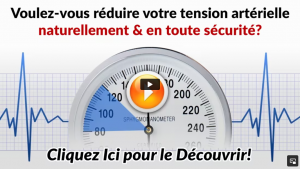The #1 Rated Blood Sugar Formula
How Blood Pressure in the Pulmonary Artery Is Measured: Methods and Techniques

Getting to Know Pulmonary Artery Blood Pressure
When it comes to keeping tabs on heart health, checking the blood pressure in the pulmonary artery is a big deal. It gives us a peek into how the blood is flowing through the lungs and can flag issues like pulmonary hypertension. So, how do we actually measure this pressure, and why does it matter so much? Let's break it down and look at the different ways we can check pulmonary artery pressure.
What Is Pulmonary Artery Blood Pressure All About?
The pulmonary artery is super important because it carries deoxygenated blood from the heart's right side to the lungs, where it swaps carbon dioxide for oxygen. Keeping an eye on the pressure in this artery helps us see how well the heart and lungs are working together. High pressures might be a sign of problems like heart failure or chronic lung diseases.
Why We Need to Measure Pulmonary Artery Pressure
Checking pulmonary artery pressure isn’t just a routine task; it’s like having a window through which we can view the heart-lung connection. This measurement is key for diagnosing conditions such as pulmonary arterial hypertension (PAH), which can be quite serious if not caught early. By spotting these issues early on, we can step in with timely treatments that might make a big difference for patients.
How We Measure It: An Overview
There are a bunch of different ways to measure blood pressure in the pulmonary artery, from methods that are hands-on to those that are less so. Each one has its perks and is best suited to specific situations. Knowing these techniques helps healthcare workers pick the best option for their patients.
Invasive Techniques for Measurement
Right Heart Catheterization
Right heart catheterization is the go-to method for getting an accurate read on pulmonary artery pressure. This procedure involves threading a catheter through the veins and into the heart and pulmonary artery. It gives precise measurements, making it invaluable for dealing with tricky heart conditions.
Pulmonary Artery Catheterization
Pulmonary artery catheterization, also known as Swan-Ganz catheterization, is another detailed method. Like the right heart catheterization, it involves threading a catheter through the heart to the pulmonary artery. This technique measures pressure and can also check cardiac output and oxygen levels, providing a thorough look at heart function.
Weighing Risks and Benefits
While these invasive methods are spot-on, they come with risks like infection, bleeding, or irregular heartbeats. So, they’re usually reserved for situations where you really need precise measurements. Healthcare professionals must consider the pros and cons carefully when choosing these options.
Non-Invasive Techniques for Measurement
Echocardiography
Echocardiography is a favorite non-invasive method that uses ultrasound to create heart images and assess blood flow. It doesn’t directly measure pulmonary artery pressure but can give an estimate by looking at the heart’s structure and function. It’s popular because it’s safe and easy to do.
Magnetic Resonance Imaging (MRI)
MRI is another non-invasive option that provides detailed images of the heart and lungs. It can estimate pulmonary artery pressure by analyzing how blood flows. Although less common than echocardiography, MRI offers high-resolution images, especially useful when structural issues are suspected.
Doppler Ultrasound
Doppler ultrasound is an offshoot of echocardiography, focusing on blood flow and speed. By measuring how fast blood moves through the heart and pulmonary arteries, it provides pressure estimates. This technique is great for regular check-ups and can be done often without any risk to the patient.
Comparing Invasive and Non-Invasive Methods
Accuracy in Measurements
Invasive methods tend to be more accurate because they offer direct measurements. Non-invasive techniques, while not as precise, give valuable estimates and are perfect for routine check-ups. Deciding which method to use often depends on whether pinpoint accuracy or ease and safety are more important.
Weighing Risks and Benefits
Invasive techniques bring more risk but also deliver precise data that is crucial for some diagnoses. Non-invasive methods, however, are safer and can be done more frequently. The decision typically hinges on the patient's overall health and the complexity of their condition.
Preferences Based on Situation
Healthcare providers might lean towards non-invasive methods for first looks and regular follow-ups, saving invasive techniques for when detailed pressure info is crucial. Factors like a patient's age, other health issues, and medical history also influence which route to take.
Innovations in Measuring Pulmonary Artery Pressure
Tech Advancements
The world of pulmonary artery pressure measurement is moving fast, with new tech making things more accurate and safer. Better catheter designs and advanced imaging techniques are making these procedures more accessible to patients.
Portable Monitoring Devices
Recently, portable devices have come into play, allowing for continuous pressure monitoring outside hospitals. These gadgets give real-time data, helping both patients and doctors keep tabs on daily changes in pulmonary artery pressure and manage conditions proactively.
Looking to the Future
As we look ahead, the future of measuring pulmonary artery pressure is bright, with potential breakthroughs like AI to analyze data and predict trends. These innovations could change how we monitor heart health, making it more tailored and forward-looking.
Clinical Impact of Pulmonary Artery Pressure
Diagnosing Pulmonary Hypertension
Getting an accurate read on pulmonary artery pressure is key to diagnosing pulmonary hypertension. Spotting it early means we can jump in with treatments that slow down the disease and improve life quality. Understanding these measurements helps doctors create effective treatment plans.
Tracking Disease Progression
For those already diagnosed, keeping an eye on pulmonary artery pressure is vital for tracking how the disease is progressing. It helps adjust treatments and can signal if things are getting worse, allowing for quick medical responses to cut down on complications.
Customizing Treatment Plans
Tailored treatment plans depend heavily on precise pulmonary artery pressure data. By grasping each patient's unique pressure dynamics, healthcare providers can fine-tune therapies, finding that sweet spot between effectiveness and side effects to achieve the best outcomes.
Real-World Cases and Applications
Success Stories in Diagnosis
Case studies show how precise pulmonary artery pressure measurements can crack complex cardiovascular cases. These stories highlight how accurate data leads to successful treatments, boosting patient outcomes and quality of life.
Insights from Clinical Trials
Ongoing clinical trials are shedding light on pulmonary artery pressure measurement. The insights from these trials help refine best practices and set standardized protocols that improve patient safety and diagnostic precision.
Patient Stories
Patients often share their journeys, underscoring the impact of accurate pulmonary artery pressure measurement on their treatment experiences. These personal accounts provide valuable insights, showcasing how these techniques play a role in patient-centered care.
Wrapping Up and Looking Forward
Recapping Key Takeaways
In the end, measuring pulmonary artery blood pressure is a cornerstone of heart and lung diagnostics. Whether using invasive or non-invasive methods, getting accurate measurements is crucial for diagnosing, monitoring, and treating various heart and lung conditions.
Picking the Right Measurement Method
Choosing the right measurement method involves balancing precision with safety and comfort. Healthcare providers need to consider the patient's needs, the clinical situation, and the resources at hand to make the best call.
Future Research Directions
With tech advancing, the field of pulmonary artery pressure measurement is set for exciting innovations. Continued research will likely lead to even more precise and less invasive methods, improving our ability to diagnose and manage heart conditions effectively.

Maja Kowalczyk is a health enthusiast and has been interested in healthy and natural methods of regulating blood pressure for many years.










